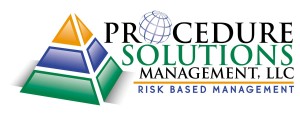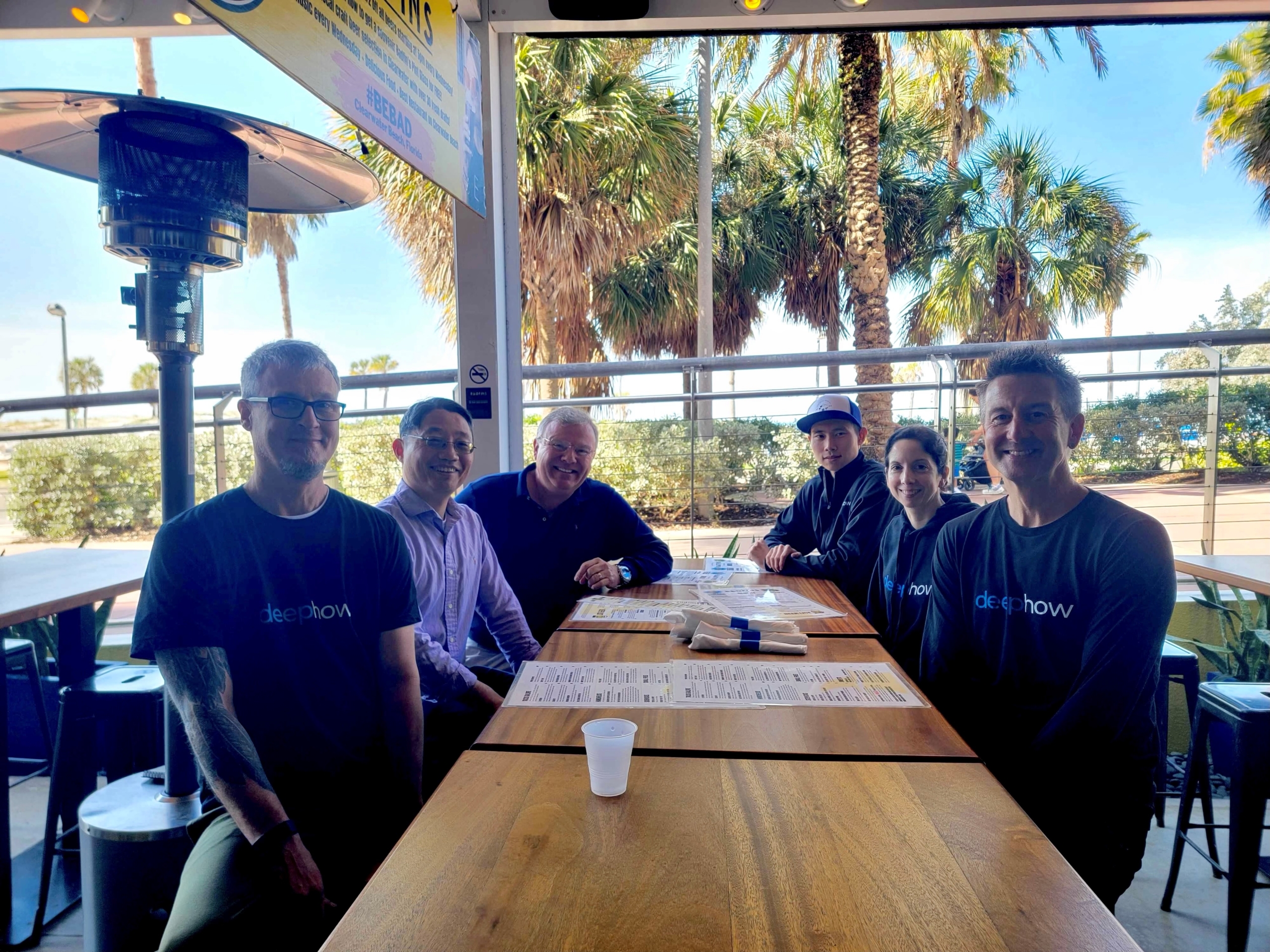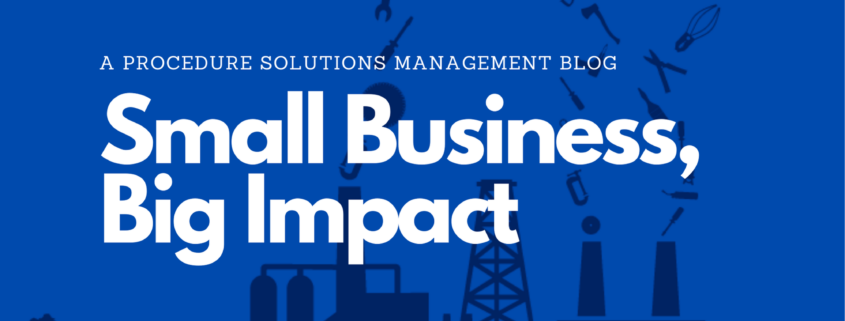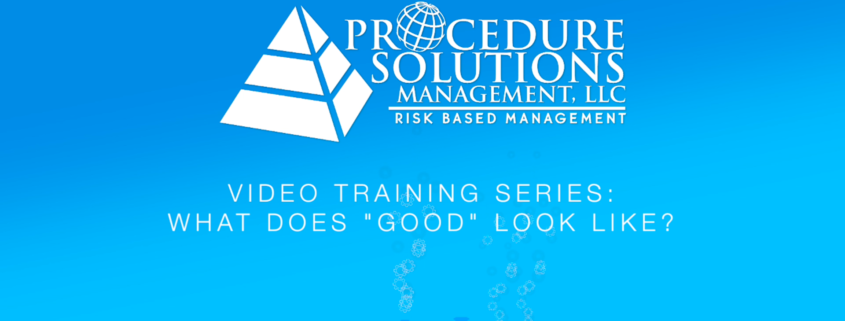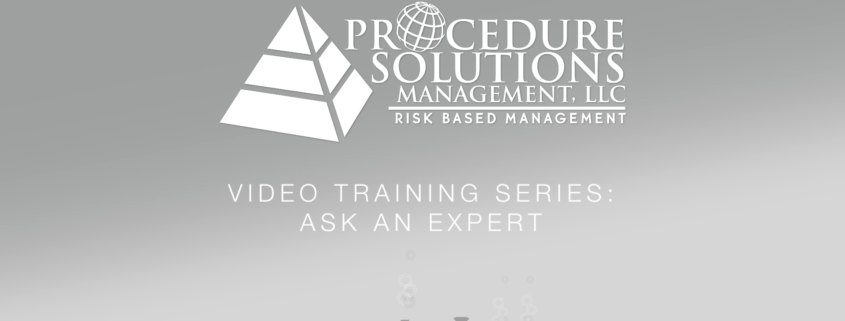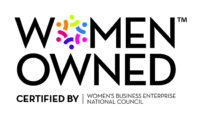Posts
Lunch & Learn – How to Improve Your Questioning Attitude
/0 Comments/in Technical Writing, Writing Tools and Tips/by Sarah PickettEmployee Spotlight: John Oswald
/0 Comments/in Employee Spotlight, Staffing and Recruiting, Technical Writing, Uncategorized, Writing Tools and Tips/by Sarah Pickett5 Simple Steps To Help You Start Writing Your Procedure
/0 Comments/in Ask An Expert, Technical Writing, Writing Tools and Tips/by Sarah PickettSmall Business, Big Impact
/0 Comments/in News, Technical Writing, Uncategorized, Writing Tools and Tips/by Sarah Pickett
The revitalization of our blog will discuss how, as a small business, we have been able to make a big impact.
Did you know that small businesses make up most of the American economy? In fact, more than 99% of U.S. businesses are small businesses!
This means that Procedure Solutions Management is part of the majority of the businesses in the U.S. While we may be considered “small,” this also means that we can make a big impact.
As a small company, we provide our training and consulting services to some of the world’s largest oil and gas companies. These services have helped ensure the safety of thousands of staff members and industry-leading businesses. Our most significant impact has been helping them have a more human-factored perspective that supports greater safety awareness in their daily operations and maintenance activities.
We have also taught over 20,000 procedure writers and reviewers how to become more human performance focused. Our training helps them correct the bad habits that they’ve fallen into while earning their PPA Procedure Writer Certification in the process.
In addition to this, we have spent the past 14 years providing staffing support to companies looking to create a much safer work environment for themselves and their colleagues.
Because we’re proud to be a small business with a big impact, we want to share some of our tips and tricks with you through the revitalization of our PSM Blog!
Each month we will have a guest writer from our team share knowledge on what they’ve learned throughout their career and at PSM. We will also spotlight our talented contract employees who will discuss life at PSM and their steps to becoming improved human performance focused writers.
We’re incredibly excited to share with you what we’ve learned in our 14-year journey!
Stay tuned for more updates, and please let us know if there are any topics you would like us to discuss!
By Sarah Pickett, Marketing Coordinator
If you like our content, subscribe to our blog using the link to the right of this post. Or, visit our services page for more information on our staffing, training, or consulting services.
What Does “Good” Look Like – Part 4
/0 Comments/in Video Training Series, What does good look like?/by James Bennett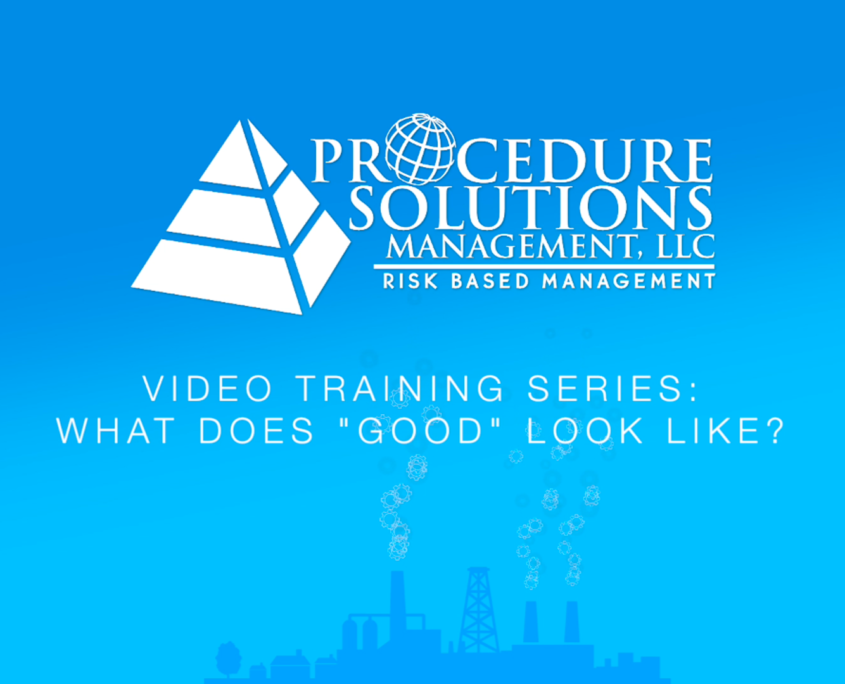
Procedure Solutions Management, LLC – Video Training Series – What Does “Good” Look Like? – Identifying Human Error Likely Situations
Identifying Human Error Likely Situations – What Does “Good” Look Like? – Episode 4
Since 2008, Procedure Solutions Management, LLC, has taught over 9,000 (correction over 10,000) students on a variety of procedure-related topics. When we teach our classes there are 5 main principles that we want to convey:
- Level of Detail – What to do OR how to do it.
- Identify Common Error Likely Situations – What does “Good” look like?
- General Technical Writing Guidelines – Writing Fundamentals
- Organizing and Sequencing of Steps
- Utilizing Templates or Human-Factored Writing Tools
This is part 4 of a 4-part “What Does “Good” Look Like” series that will focus on the second principle, Identifying (and Eliminating) Human Error Likely Situations. It will cover the following:
- Complex Calculations Without a Peer Check
- Non-Typical/Unusual Steps or Terms
- Time Constraints
We had fun putting these videos together and hope you will enjoy them. Please remember that this is only a very small part of a comprehensive training curriculum that was designed to help eliminate human performance challenges in procedures.
For more information on our Procedure Writer Certification Courses, visit our Training Page or Register NOW for one of our upcoming classes. Blog readers can use the following coupon code to save $100 on course registration: VTSBlog18
For more articles on technical writing and to be notified when part two is released, be sure to subscribe to our blog using the link to the right of this post.
What Does “Good” Look Like – Part 3
/0 Comments/in Video Training Series, What does good look like?/by James Bennett
Procedure Solutions Management, LLC – Video Training Series – What Does “Good” Look Like? – Identifying Human Error Likely Situations
Identifying Human Error Likely Situations – What Does “Good” Look Like? – Episode 3
Since 2008, Procedure Solutions Management, LLC, has taught over 9,000 (correction over 10,000) students on a variety of procedure-related topics. When we teach our classes there are 5 main principles that we want to convey:
- Level of Detail – What to do, OR how to do it.
- Identify Common Error Likely Situations – What does “Good” look like?
- General Technical Writing Guidelines – Writing Fundamentals
- Organizing and Sequencing of Steps
- Utilizing Templates or Human-Factored Writing Tools
This is part 3 of a 4-part “What Does “Good” Look Like” series that will focus on the second principle, Identifying (and Eliminating) Human Error Likely Situations. It will cover the following:
- Inconsistent Place-keeping Methods
- Precautions, Notes, Cautions, and Warnings Without Value
- Actions or Implied Actions in Precautions, Notes, Cautions, and Warnings
- Unrelated Actions in the Same Step
We had fun putting these videos together and hope you will enjoy them. Please remember that this is only a very small part of a comprehensive training curriculum that was designed to help eliminate human performance challenges in procedures.
For more information on our Procedure Writer Certification Courses, visit our Training Page or Register NOW for one of our upcoming classes. Blog readers can use the following coupon code to save $100 on course registration: VTSBlog18
For more articles on technical writing and to be notified when part two is released, be sure to subscribe to our blog using the link to the right of this post.
What Does “Good” Look Like – Part 2
/0 Comments/in Video Training Series, What does good look like?/by James Bennett
Procedure Solutions Management, LLC – Video Training Series – What Does “Good” Look Like? – Identifying Human Error Likely Situations
Identifying Human Error Likely Situations – What Does “Good” Look Like? – Episode 2
Since 2008, Procedure Solutions Management, LLC, has taught over 9,000 (correction over 10,000) students on a variety of procedure-related topics. When we teach our classes there are 5 main principles that we want to convey:
- Level of Detail – What to do, OR how to do it.
- Identify Common Error Likely Situations – What does “Good” look like?
- General Technical Writing Guidelines – Writing Fundamentals
- Organizing and Sequencing of Steps
- Utilizing Templates or Human-Factored Writing Tools
This is part 2 of a 4-part “What Does “Good” Look Like” series that will focus on the second principle, Identifying (and Eliminating) Human Error Likely Situations. It will cover the following:
- Steps With Conflicting Information
- Inappropriate Use of Verifications and Peer Checks
- Inadequate Defenses and Depth
- Excessive Branching
- Excessive Physical Challenges
We had fun putting these videos together and hope you will enjoy them. Please remember that this is only a very small part of a comprehensive training curriculum that was designed to help eliminate human performance challenges in procedures.
For more information on our Procedure Writer Certification Courses, visit our Training Page or Register NOW for one of our upcoming classes. For more articles on technical writing and to be notified when part two is released, be sure to subscribe to our blog using the link to the right of this post.
What Does “Good” Look Like – Part 1
/0 Comments/in Video Training Series, What does good look like?/by James Bennett
Procedure Solutions Management, LLC – Video Training Series – What Does “Good” Look Like? – Identifying Human Error Likely Situations
Identifying Human Error Likely Situations – What Does “Good” Look Like? – Episode 1
Since 2008, Procedure Solutions Management, LLC, has taught over 9,000 (correction over 10,000) students on a variety of procedure-related topics. When we teach our classes there are 5 main principles that we want to convey:
- Level of Detail – What to do, OR how to do it.
- Identify Common Error Likely Situations – What does “Good” look like?
- General Technical Writing Guidelines – Writing Fundamentals
- Organizing and Sequencing of Steps
- Utilizing Templates or Human-Factored Writing Tools
This is part 1 of a 4-part “What Does “Good” Look Like” series that will focus on the second principle, Identifying (and Eliminating) Human Error Likely Situations. It will cover the following:
- Identify in-field decisions without clear guidance
- Excessiveness of in-field decisions
- Steps that are vague or missing critical detail
- Excessive Administrative and Technical Detail
We had fun putting these videos together and hope you will enjoy them. Please remember that this is only a very small part of a comprehensive training curriculum that was designed to help eliminate human performance challenges in procedures.
For more information on our Procedure Writer Certification Courses, visit our Training Page or Register NOW for one of our upcoming classes. For more articles on technical writing and to be notified when part two is released, be sure to subscribe to our blog using the link to the right of this post.
Ask an Expert – How Can Management Improve Human Performance?
/0 Comments/in Ask An Expert/by James Bennett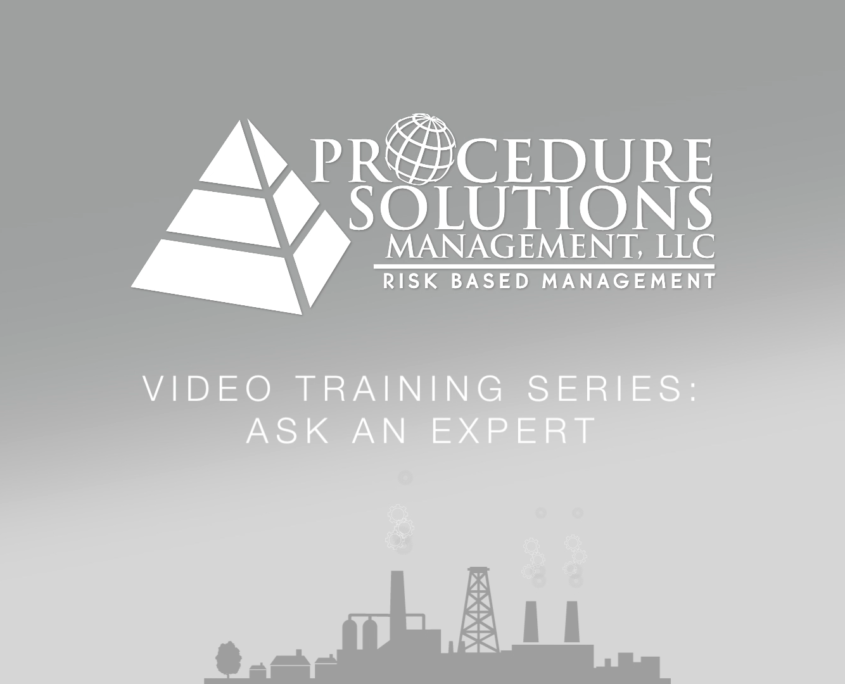
Procedure Solutions Management, LLC – Video Training Series – Ask An Expert – How Can Managers Improve Human Performance?
Ask An Expert – Episode 5 – “How can management teams help improve human performance?”
Human Performance is more than a catchy phrase. It is essential to the success of any company and improving human performance should be the goal of any successful manager. But, when it comes to managing a procedure program and/or a team of writers, it can be difficult for managers to identify the most important elements for improving and ensuring optimal human performance. How do they ensure that they are setting their writers up for success?
In this segment of “Ask An Expert,” Procedure Solutions Management’s Managing Member, Darlene McCord, answers the question, “How can management teams help improve human performance?”
For more information on Technical Writing, subscribe to our blog using the link to the right of this post. Or, visit our services page for more information on our staffing, training, or consulting services.
Follow us on Facebook
Recent Posts
 Lunch & Learn: How Graphics Enhance ProceduresMay 25, 2023 - 12:53 pm
Lunch & Learn: How Graphics Enhance ProceduresMay 25, 2023 - 12:53 pm Lunch & Learn: How Leadership Influences ProceduresJuly 2, 2024 - 6:39 pm
Lunch & Learn: How Leadership Influences ProceduresJuly 2, 2024 - 6:39 pm Tips for Effective Communication in a Remote Work EnvironmentApril 5, 2024 - 7:12 pm
Tips for Effective Communication in a Remote Work EnvironmentApril 5, 2024 - 7:12 pm A Comprehensive Guide to the Procedure Review ProcessFebruary 22, 2024 - 3:43 pm
A Comprehensive Guide to the Procedure Review ProcessFebruary 22, 2024 - 3:43 pm Lunch & Learn: Mitigating Errors During the Procedure Review ProcessNovember 6, 2023 - 4:16 pm
Lunch & Learn: Mitigating Errors During the Procedure Review ProcessNovember 6, 2023 - 4:16 pm
